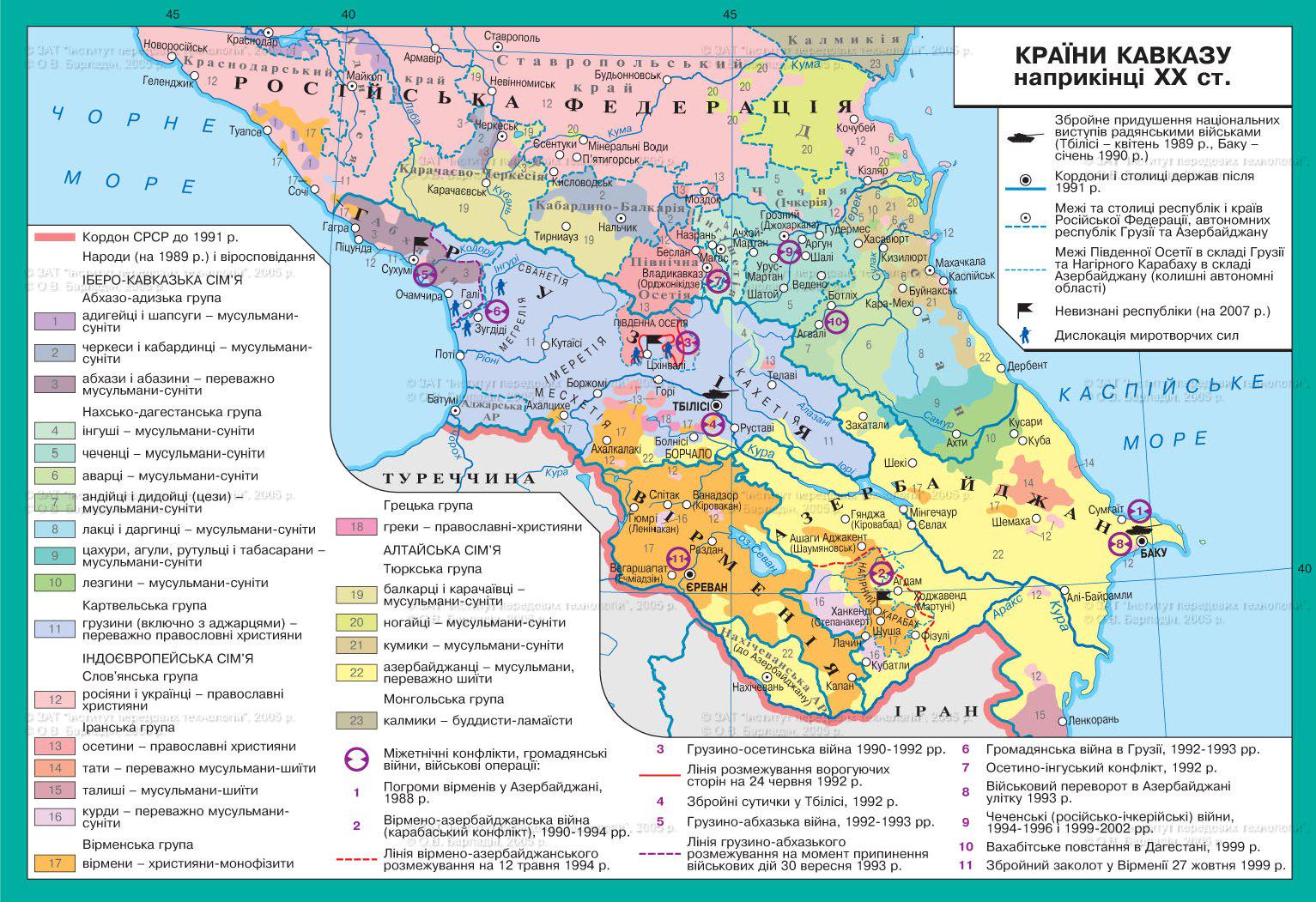Ethnic and Political Map of the Caucasus Region


Marcus Rodriguez
Historical Geography Expert
Marcus Rodriguez specializes in historical cartography and geographic data analysis. With a background in both history and geography, he brings unique...
Geographic Analysis
What This Map Shows
The ethnic and political map of the Caucasus region at the end of the 20th century offers a detailed snapshot of the complex social and political landscape of this pivotal area. It illustrates the distribution of various ethnic groups and the political boundaries that defined their territories during a period marked by significant upheaval and change. As we delve into the map, we can observe not only the borders of nations but also the intricate tapestry of cultures and communities that have coexisted, often contentiously, for centuries.
Deep Dive into Ethnic and Political Dynamics
The Caucasus region is a melting pot of ethnicities, languages, and cultures, making it one of the most diverse regions in the world. Historically, it has been a crossroads for various civilizations, leading to a rich, yet often tumultuous, history. At the end of the 20th century, the collapse of the Soviet Union was a key event that reshaped the political and ethnic landscape of the Caucasus.
The map reveals the presence of major ethnic groups, including Armenians, Azerbaijanis, and Georgians, alongside smaller groups such as Chechens, Ingush, Abkhazians, and Ossetians. Each of these ethnicities has its own unique identity and historical grievances, which have often led to conflict. For instance, the Armenian and Azerbaijani populations have a long-standing rivalry, primarily rooted in the territorial dispute over Nagorno-Karabakh, an area predominantly populated by ethnic Armenians but internationally recognized as part of Azerbaijan.
Interestingly, the map highlights the political entities that emerged during this transitional period. Armenia, Azerbaijan, and Georgia became independent nations, while regions such as Abkhazia and South Ossetia declared independence from Georgia, leading to violent conflicts. The ethnic tensions in Chechnya culminated in two brutal wars, further complicating the political landscape.
Moreover, the map serves as a reminder of the influence of external powers, such as Russia, which has historically sought to exert control over the region. The instability following the Soviet Union's dissolution created a power vacuum that various groups and countries sought to fill, often exacerbating existing ethnic tensions.
Regional Analysis
When examining the Caucasus region through the lens of this map, it becomes evident that each area possesses unique characteristics shaped by its ethnic makeup and political realities. For example, in Armenia, the overwhelming ethnic Armenian population has fostered a strong national identity, particularly following the traumatic events of the Armenian Genocide during World War I. The nation has focused on building a cohesive society, although it faces ongoing tensions with Azerbaijan over Nagorno-Karabakh.
In contrast, Azerbaijan, with its significant Azerbaijani population and a smaller yet influential ethnic minority of Lezgins and Tuvans, has experienced its share of internal strife. The oil-rich nation has capitalized on its natural resources to assert its sovereignty and modernize, yet the unresolved Nagorno-Karabakh conflict continues to cast a shadow over its political stability.
Georgia is another intricate example. With diverse ethnic groups such as Ossetians and Abkhazians, the country has grappled with separatist movements, particularly in the regions of South Ossetia and Abkhazia. The map reveals how these regions, despite being critically important to Georgia's territorial integrity, have declared independence, leading to international recognition challenges and ongoing conflicts.
Significance and Impact
Understanding the ethnic and political dynamics of the Caucasus region is crucial not only for historians but also for policymakers and diplomats. The legacy of the late 20th century continues to influence contemporary geopolitical tensions. The unresolved conflicts and ethnic divisions have far-reaching implications for regional stability, security, and economic development.
Interestingly, current trends indicate that while some regions are moving towards greater integration and cooperation, others remain mired in conflict and mistrust. For example, the potential for economic collaboration in the South Caucasus, especially in energy transit routes, is often overshadowed by political disputes.
Looking ahead, the future of the Caucasus will likely be shaped by how these ethnic groups navigate their identities and relationships with one another, as well as their interactions with larger powers like Russia, Turkey, and the West. The ethnic and political map of the Caucasus at the end of the 20th century serves as a pivotal reference point for understanding these dynamics and the ongoing quest for peace and stability in the region.
Comments
Loading comments...